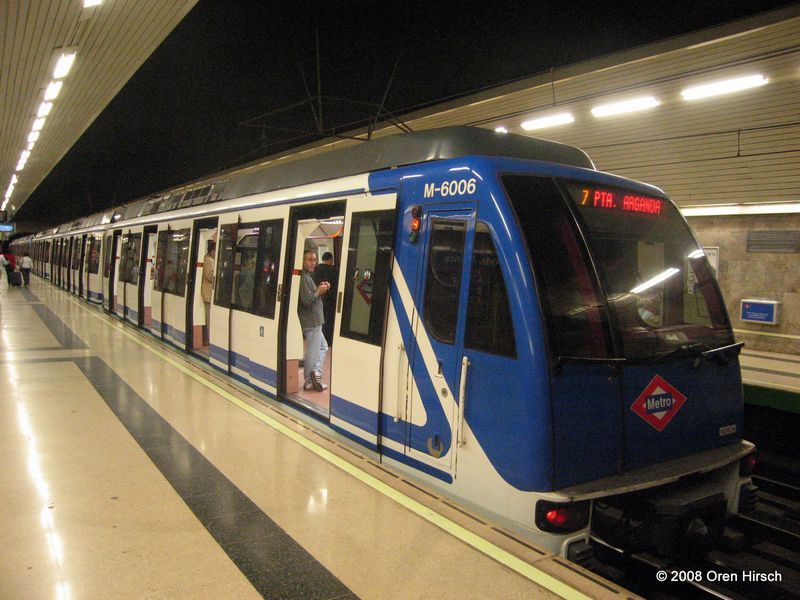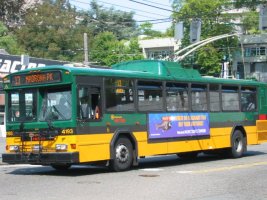Many are familiar with some of the world’s geographic extremes. The lowest point on earth is the Dead Sea. The highest point is Mount Everest. The geographic center of the lower 48 United States is about four miles west of Lebanon, Kansas. But have you ever wondered where the world’s southernmost subway station is located? Wonder no more and keep reading!
Located at 34.643028 degrees south, 58.461611 degrees west, the Plaza de los Virreyes – Eva Perón station of the Buenos Aires Underground holds the distinction of being the southernmost subway station in the world. As is the case with many things of this nature, there is some dispute as to whether Plaza de los Virreyes should get the title. The Parliament Station in Melbourne, Australia is further south. However, that station serves “suburban railway” trains, not subway trains. What is the difference between a suburban railway and a subway? Now we’re getting into some subjective details, but I don’t think many people would consider SEPTA’s Suburban Station or New York Penn Station, even though both of them are underground, to be “subway” or “Metro” stations. The trains serving Parliament Station in Melbourne are akin to commuter rail trains that one might find in North America, and therefore, I don’t personally consider Parliament to be a subway station.
There isn’t a whole lot that is particularly noteworthy about the Plaza de los Virreyes station once you get there, other than the feeling that the tracks at the southern end of the station mark the “end of the world” so to speak and that no subway train anywhere can take you further south. The tilework is unremarkable. The station’s mezzanine feels a lot like just about any other “end of the line” terminal station mezzanine, with a number of onward connections available at the street level. The lighting for photos of trains in the station itself isn’t all that great. But despite the lack of noteworthiness in other ways, Plaza de los Virreyes gets to be the southernmost subway station in the world and no one can take that distinction away from it (for now).
Even if Plaza de los Virreyes itself is perhaps a bit underwhelming, the journey to get there is not. Following the 2013 retirement of the 100 year old “La Brugeoise” cars that operated on Line A, Line E of the Buenos Aires Underground has the distinction of operating the city’s oldest subway cars, the CAF-GEE cars, that were manufactured in 1968. Some of these cars have not been refurbished and still feature wooden seats and incandescent lighting, and some aren’t even painted in the standard yellow livery that most Buenos Aires Underground trains feature. The artwork at some of the stations along the journey to Plaza de los Virreyes is in fact eye-grabbing and worth closer examination if you have time. Line E may not be the busiest or fastest line in Buenos Aires, but it certainly has a certain “blue collar” charm to it, and knowing no train in the world takes you further south definitely gets the line some extra brownie points. It is definitely worth exploring if you find yourself in Buenos Aires!
The following is a selection of images from Plaza de los Virreyes – Eva Perón Station and the rest of Line E of the Buenos Aires Underground.
 Plaza de los Virreyes - Eva Perón, the southernmost subway station in the world, January 12, 2018
Plaza de los Virreyes - Eva Perón, the southernmost subway station in the world, January 12, 2018
 Plaza de los Virreyes - Eva Perón, the southernmost subway station in the world, January 12, 2018
Plaza de los Virreyes - Eva Perón, the southernmost subway station in the world, January 12, 2018
 Plaza de los Virreyes - Eva Perón, the southernmost subway station in the world, January 12, 2018
Plaza de los Virreyes - Eva Perón, the southernmost subway station in the world, January 12, 2018
 Plaza de los Virreyes - Eva Perón, the southernmost subway station in the world, January 12, 2018
Plaza de los Virreyes - Eva Perón, the southernmost subway station in the world, January 12, 2018
 Plaza de los Virreyes - Eva Perón, the southernmost subway station in the world, January 12, 2018
Plaza de los Virreyes - Eva Perón, the southernmost subway station in the world, January 12, 2018
 Plaza de los Virreyes - Eva Perón, the southernmost subway station in the world, January 12, 2018
Plaza de los Virreyes - Eva Perón, the southernmost subway station in the world, January 12, 2018
 Plaza de los Virreyes - Eva Perón, the southernmost subway station in the world, January 12, 2018
Plaza de los Virreyes - Eva Perón, the southernmost subway station in the world, January 12, 2018
 Jujuy, January 12, 2018
Jujuy, January 12, 2018
 Fiat-Materfer at Avenida La Plata, January 12, 2018
Fiat-Materfer at Avenida La Plata, January 12, 2018
 Fiat-Materfer trains at Plaza de los Virreyes - Eva Perón, the southernmost subway station in the world, January 12, 2018
Fiat-Materfer trains at Plaza de los Virreyes - Eva Perón, the southernmost subway station in the world, January 12, 2018
 Emilio Mitre, January 7, 2018
Emilio Mitre, January 7, 2018
 CAF-GEE UM15 at Emilio Mitre, January 7, 2018
CAF-GEE UM15 at Emilio Mitre, January 7, 2018
 CAF-GEE UM17 at Avenida La Plata, January 12, 2018
CAF-GEE UM17 at Avenida La Plata, January 12, 2018
 Avenida La Plata, January 12, 2018
Avenida La Plata, January 12, 2018
 Fiat-Materfer at Avenida La Plata, January 12, 2018
Fiat-Materfer at Avenida La Plata, January 12, 2018
 Fiat-Materfer at Independencia, January 12, 2018
Fiat-Materfer at Independencia, January 12, 2018
 Fiat-Materfer at Independencia, January 12, 2018
Fiat-Materfer at Independencia, January 12, 2018
 Fiat-Materfer at Independencia, January 12, 2018
Fiat-Materfer at Independencia, January 12, 2018
 Fiat-Materfer 7B at Independencia, January 12, 2018
Fiat-Materfer 7B at Independencia, January 12, 2018
 Fiat-Materfer interior
Fiat-Materfer interior
For additional photos from Buenos Aires, please click here and stay tuned for future Travelogue posts!


